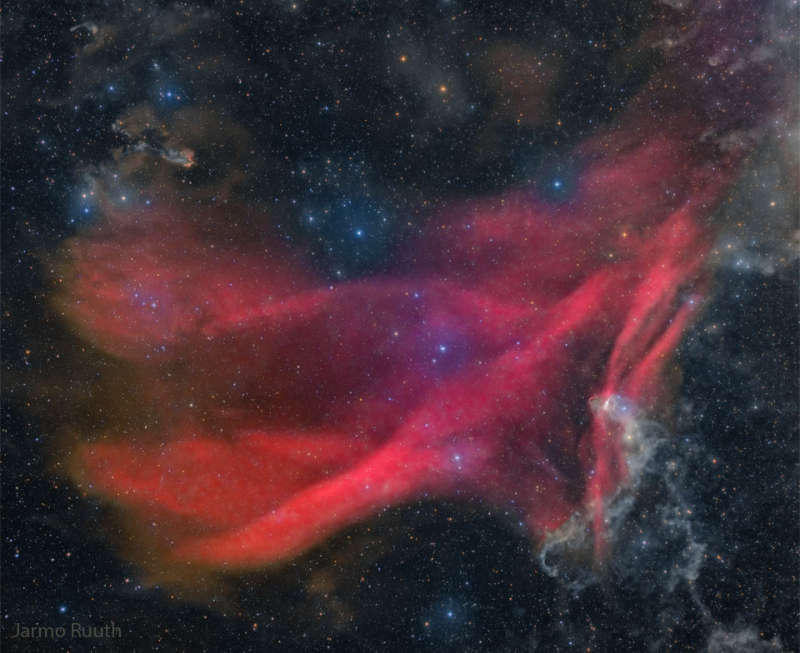Credit & Copyright: Jarmo Ruuth, Telescope Live;
Text:
Ata Sarajedini
(Florida Atlantic U.,
Astronomy Minute podcast)
Explanation:
It is one of the largest nebulas on the sky -- why isn't it better known?
Roughly the same angular size as the
Andromeda Galaxy, the Great Lacerta Nebula can be found toward the
constellation of the Lizard (Lacerta).
The emission nebula is difficult to see with wide-field binoculars because
it is so faint, but also usually
difficult to see with a
large telescope because it is so great in angle -- spanning about three
degrees.
The depth, breadth, waves, and beauty of the nebula -- cataloged as
Sharpless 126 (Sh2-126) --
can best be seen and appreciated with a
long duration camera exposure.
The featured image is one such combined exposure -- in this case
10 hours over five different colors and over six nights during
this past June and July at the
IC Astronomy Observatory in
Spain.
The hydrogen gas in the Great Lacerta Nebula
glows red because it is excited by light from the bright star
10 Lacertae, one of the bright blue stars just above the red-glowing nebula's
center.
The stars and nebula are about 1,200
light years distant.
Harvest Full Moon 2022:
Notable Submissions to APOD
1999 2000 2001 2002 2003 2004 2005 2006 2007 2008 2009 2010 2011 2012 2013 2014 2015 2016 2017 2018 2019 2020 2021 2022 2023 2024 2025 |
Январь Февраль Март Апрель Май Июнь Июль Август Сентябрь Октябрь Ноябрь Декабрь |
NASA Web Site Statements, Warnings, and Disclaimers
NASA Official: Jay Norris. Specific rights apply.
A service of: LHEA at NASA / GSFC
& Michigan Tech. U.
|
Публикации с ключевыми словами:
emission nebula - эмиссионная туманность
Публикации со словами: emission nebula - эмиссионная туманность | |
См. также:
Все публикации на ту же тему >> | |
